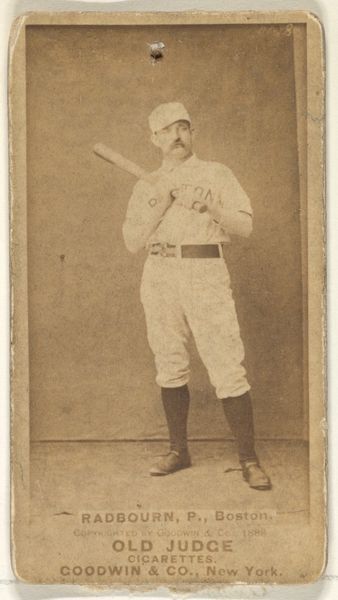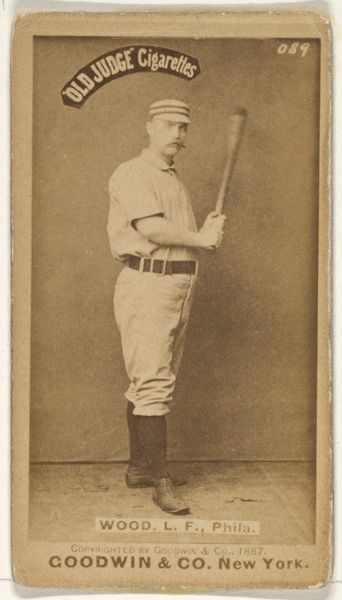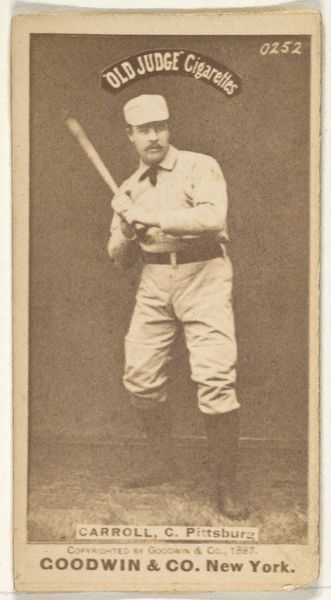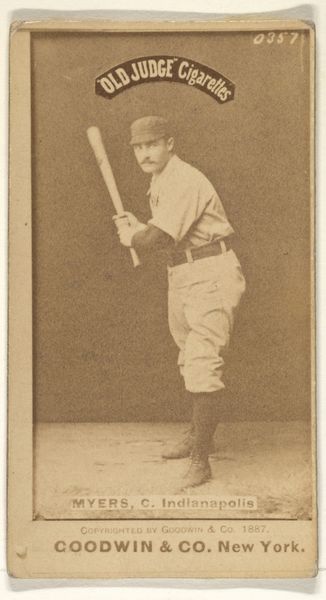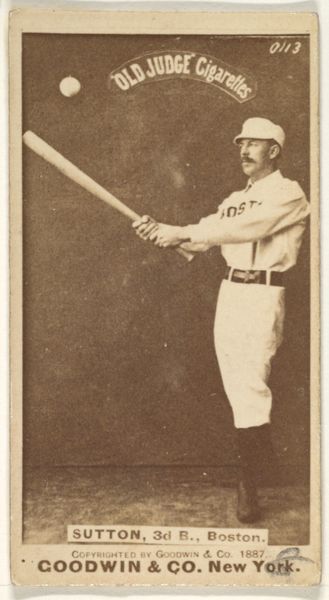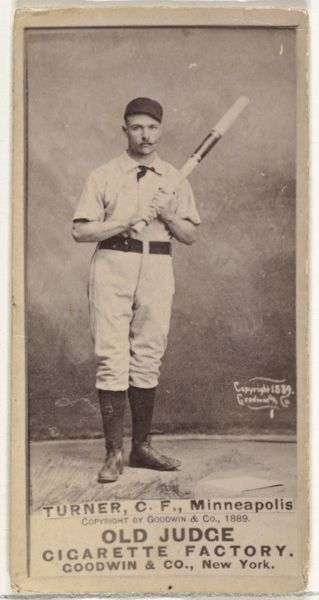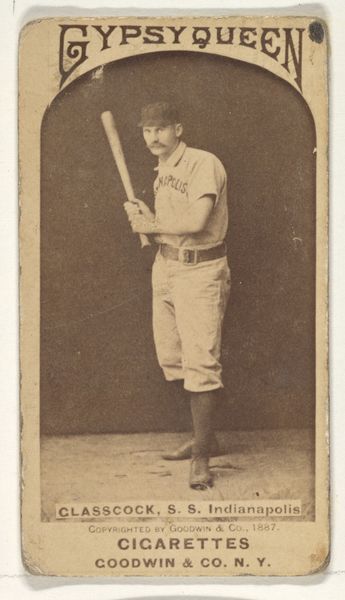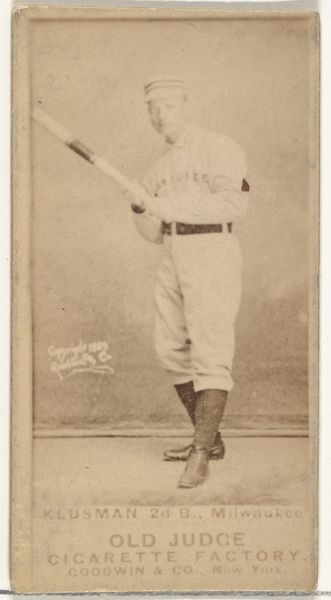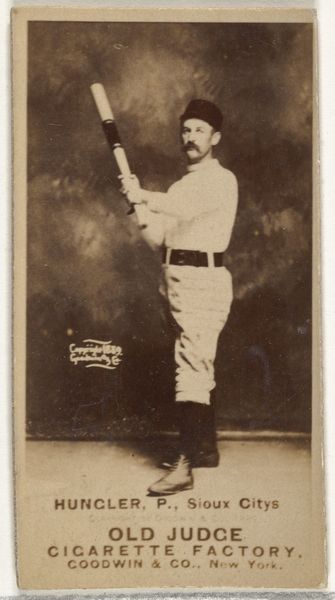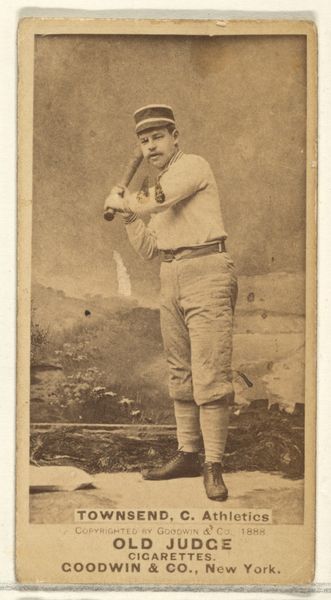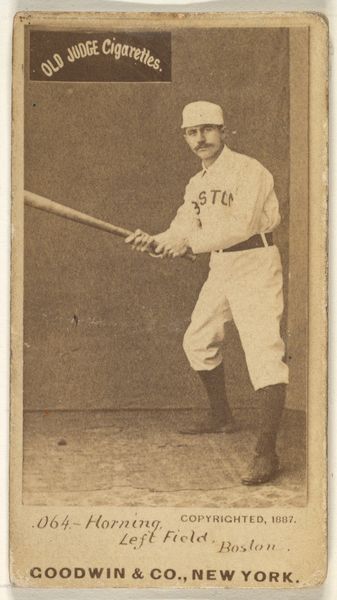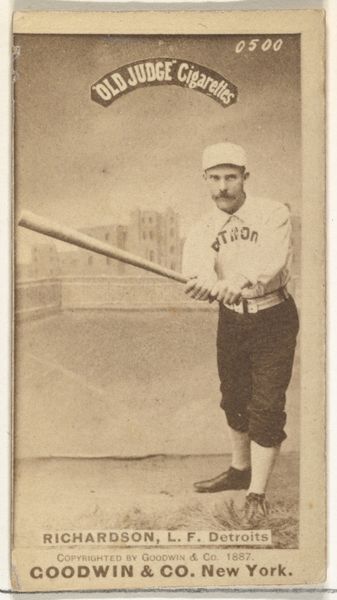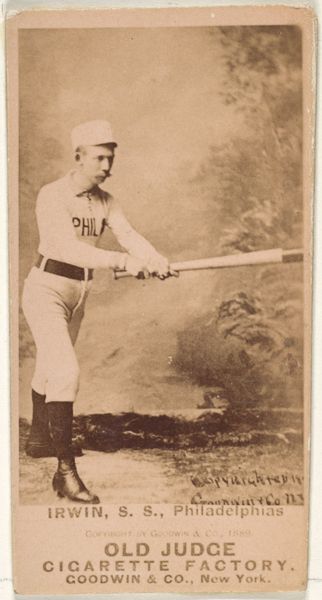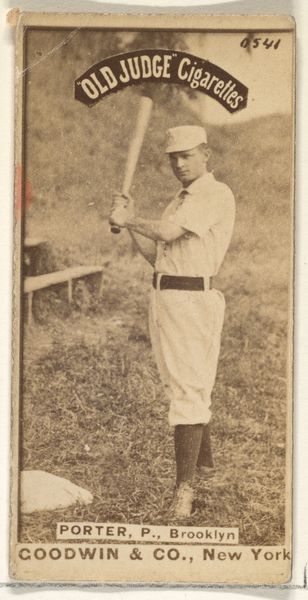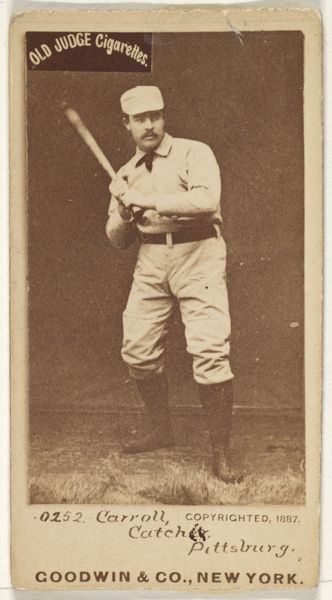
John M. Ward, Baseball Player, from World's Champions, Series 1 (N28) for Allen & Ginter Cigarettes 1887
0:00
0:00
Dimensions: Sheet: 2 3/4 x 1 1/2 in. (7 x 3.8 cm)
Copyright: Public Domain
Curator: Ah, this miniature portrait of John M. Ward. The crisp lines, the almost caricatured rendering, typical of late 19th-century print work. The Met dates it to 1887; part of the World's Champions series, printed by Allen & Ginter for their cigarettes. What do you think? Editor: It's the *gloss* that gets me. You can almost feel the slickness of the card between your fingers, and imagine the tobacco smell clinging to it. It speaks of mass production, not fine art. Curator: True, its creation as a cigarette insert makes it a commodity object first, but let’s not dismiss it. Notice the Ukiyo-e influence; that flattened perspective and the deliberate placement of the subject within the frame create an interesting visual tension. It transcends simple portraiture. Editor: But that very purpose--a disposable insert designed to sell more tobacco--shapes how we understand its value. These weren't commissioned portraits, meant for posterity. They were incentives, rewards almost, made en masse and carelessly tossed away by many. Look at that red belt—so vivid against the cream uniform. That color wasn't chosen at random, it’s there to grab attention on a crowded counter. Curator: It certainly succeeds! And you are correct. The striking contrast creates a powerful focal point. From a formal standpoint, consider how the artist simplifies Ward’s features while retaining his recognizability. There is an undeniable skill in this economy of line. Editor: I wonder about the printing process itself. How many hands touched this card? What were the working conditions like in the Allen & Ginter factory? The materiality here goes beyond the surface; it connects to labor and the rise of consumer culture. Curator: That brings us to a valid point. Though mass-produced, these cards acted as powerful visual tools in popularizing sports figures, creating celebrities and myths within a nascent sports culture. Editor: Precisely! We need to look beyond the surface impression, considering also its origins and ultimate place as a commodity item used to move units in the market. The baseball and the cigarette are linked within a cultural moment. Curator: So, whether viewed as a piece of printed ephemera or as an object capturing elements of baseball, and indeed art history, it offers much for consideration. Editor: A powerful and small artifact reflecting industry, commerce, and burgeoning mass media, more than mere sporting nostalgia, absolutely.
Comments
No comments
Be the first to comment and join the conversation on the ultimate creative platform.
